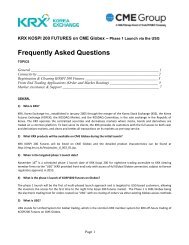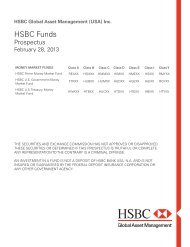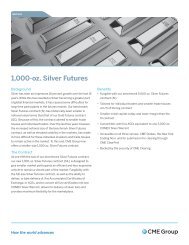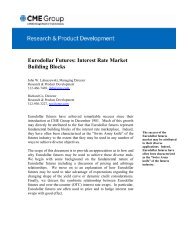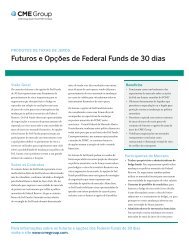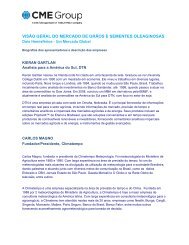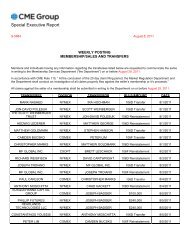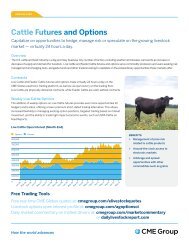Create successful ePaper yourself
Turn your PDF publications into a flip-book with our unique Google optimized e-Paper software.
Mr Abe's economic agenda is having its greatest impact in the area of monetary policy. The<br />
prime minister has put pressure on the central bank to increase monetary stimulus. This<br />
initially resulted in the announcement at the BOJ's January policy meeting of a shift to an<br />
explicit 2% inflation target and the introduction of an open-ended quantitative easing (QE)<br />
programme from 2014. At the time, we considered these policy changes to be potentially<br />
the most important in Japan for many years, but they have been trumped by more recent<br />
events, following Mr Kuroda's appointment as governor of the BOJ on March 20th.<br />
New course<br />
Mr Kuroda, a former president of the Asian Development Bank, has wasted little time in<br />
setting a new course. In early April the BOJ switched from targeting interest rates to<br />
targeting the monetary base, under a programme that it calls "quantitative and qualitative<br />
easing". This recalls the period 2001-06, when the BOJ pioneered QE (then still an obscure<br />
policy internationally) by targeting the levels of current-account balances that commercial<br />
banks held with it. Although the central bank's latest programme is similar in some respects<br />
to the original one, it is much more ambitious. The BOJ aims to double Japan's monetary<br />
base from ¥138trn (US$1.4trn) at end-2012 to ¥270trn by end-2014. It will increase its<br />
holdings of Japan government bonds (JGBs), exchange-traded funds and real-estate<br />
investment funds. The bank will also buy longer-dated JGBs, with the aim of encouraging<br />
risk appetite further along the yield curve.<br />
Monetary expansion has been accompanied by fiscal stimulus. In late February parliament<br />
approved a ¥10.3trn (US$105bn) central-government funding package focused on<br />
infrastructure. Adding in local-government and private-sector projects, the total value of<br />
stimulus is ¥20.2trn, equivalent to 4.2% of annual GDP. The budget for 2013/14 (April-<br />
March), which was approved by the lower house on April 16th, includes a 15.6% increase in<br />
public works spending. The total budget, however, is just 2.5% larger than last year, and<br />
although additional funds have been allocated to sectors that will boost economic activity,<br />
the government has made spending cuts in other areas.<br />
Will it work?<br />
The question is whether Mr Abe's policy changes will work on a chronically sluggish<br />
economy that has resisted previous stimulus efforts. Anticipation of QE, and its subsequent<br />
announcement, has boosted Japan's stockmarket and weakened the yen—notwithstanding<br />
some reversals in the past few days that are likely to have reflected investor concerns about<br />
the global economy (weak Chinese GDP data released on April 15th probably played a role).<br />
The wealth effect of rising Japanese asset prices could boost the real economy at the<br />
margins. At the same time, the BOJ's asset programme will almost certainly contribute to<br />
further yen weakness, benefiting exporters. Our latest monthly forecast for Japan expects<br />
the yen to be weaker than previously envisaged, with the currency averaging ¥98.3:US$1 in<br />
2013 and ¥102:US$1 next year.<br />
However, we remain doubtful about the ability of unorthodox monetary easing to flow<br />
through into wide-ranging and sustained gains in the real economy. Such improvements will<br />
require structural reforms; these are also part of Mr Abe's agenda, but their success is far<br />
from certain in the face of entrenched interests. Lingering overcapacity, high public debt<br />
and negative demographic factors will also continue to weigh on growth.<br />
We have recently revised up our projection of Japanese economic growth in 2013. We now<br />
expect real GDP growth of 1.1% this year, up from 0.9% in our previous forecast. However,



